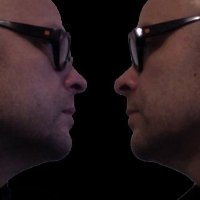
Standing for democracy
Arianna Mazzeo on how cities can be used as participatory laboratories for democracy and social inclusion.
"Stand up! through ‘creative destruction’ we need to be capable to decoding our streets, squares and city with a new sense of place where sharing, collaborating, are not just words but transformative actions of more equal relationships," wrote Arianna Mazzeo in an open letter supporting the Design for Democracy initiative.
What if we were to use urban identity as the new pedagogical model for university students? City squares, streets, neighbourhoods, businesses, and houses would be the classrooms. And this would inevitably lead to the involvement of the inhabitants in the educational process. Even better, it would include all of those who use the city; their needs, activities, wishes, and ambitions would determine the new curriculum.
Could we reimagine cities and towns as educational open source labs? If thought through, this approach could have a real impact on people who don’t have access to education, health, or economic sustainability. It could also transform their ways of living and learning. Time to find out more from Mazzeo, the director of the Design for Social Innovation and Sustainability (DesisLab) at Elisava, the Barcelona School of Design and Engineering.
DAMN: In your open letter Stand Up! Design for Democracy, you ask how citizens could become engaged in the process of making an open-ended design city. So what attitudes and skills do you think a designer needs to meaningfully contribute to this citizen-centred approach?
Arianna Mazzeo: A designer should no longer be regarded as a problem solver but as a change agent. A designer has to create opportunities and to develop practices with and for citizens, as a citizen. I’m speaking about a design approach that has to be implemented in our life, in our community, and in our public spaces to accomplish more liveable, sustainable, sociable, and resilient urban futures. A contemporary designer operates in a period of transition. We are shifting from a system that’s oriented towards industrial and object design, to a system of distributed meaning. Therefore, we have to oppose the current human-centred and user-centred trends in design and to develop a rebellious and conscious attitude.
There are numerous examples of design activism stirring things up, but when the dust settles the impact is lacking.
What we are trying to achieve cannot be called design activism. We have an educational intention. We are approaching our daily reality from a cross-cultural perspective, where diversity and critical making [hands-on productive activities that link digital technologies to society] changes the manner in which we acquire knowledge. We don’t need to be taught in academic ways anymore. We need to set up ideal conditions for learning in a peer-to-peer context, in our city squares, streets, and within our own communities. Designers are change agents when they co-design the city, creating open labs of opportunities with access for all; when they facilitate co-production in collaboration with friends, families, and neighbours.
It feels like you’re referring to the educational and socio-cultural concepts of philosophers like John Dewey, Jean Baudrillard, and Slavoj Žižek. Is your approach based on a certain set of ideas?
I don’t invent a methodology on the basis of theoretical speculation; I just work with the community. In our open classes, we always depart from the real needs of the people we encounter in the neighbourhoods. In academic terms, they form the curriculum. Most of the existing methodological concepts on the city, and by extension, the inhabitants of the city, are hypothetical or speculative. I try to avoid these as much as possible. Learning means acquiring the capabilities to redesign our relationships and understand the real needs of the citizens and residents, while acting as change makers. The educational proposition is not only for our students. Each person involved in these open-source classes undergoes a learning curve. When we share new technological developments, like for example a 3D printer, we also establish positive outcomes such as introducing new skills, boosting entrepreneurial spirit, democratising open-ended political agendas, and so on. Our ambition is quite simple: to organise design education as a platform for social and digital innovation in order to improve the quality of life for everyone.
Why have you opted for the urban context in choosing a new platform for design education?
We see the city as an open platform of relationships that enables everyone to facilitate their own use of the city through collaborative and participative bottom-up practices. Design is an inclusive creative process of expression necessary for every- one in a civilised society. So, when studying design, the place in which to learn is the community. One cannot experience the public space as an agora while playing with post-it notes in a classroom.
Can you describe how this open design school operates?
Almost a year ago, we developed the idea of the city as an open lab, with a project in Sitges, a seaside village near Barcelona. Through observation and interviewing local citizens, we realised that the village attracts a lot of tourists who love to drink the delicious coffee in the many local cafés. But consuming a lot of coffee also means a lot of waste. Through collaboration and co-creation with the inhabitants, a multidisciplinary team of students developed an open design workshop where technologies like 3D printing were used to recycle the coffee grounds and turn the waste into objects that can be used in the public spaces. Just like so many other projects, the open lab in Sitges markedly demonstrates how we can develop learning and collective thinking through mapping a city.









